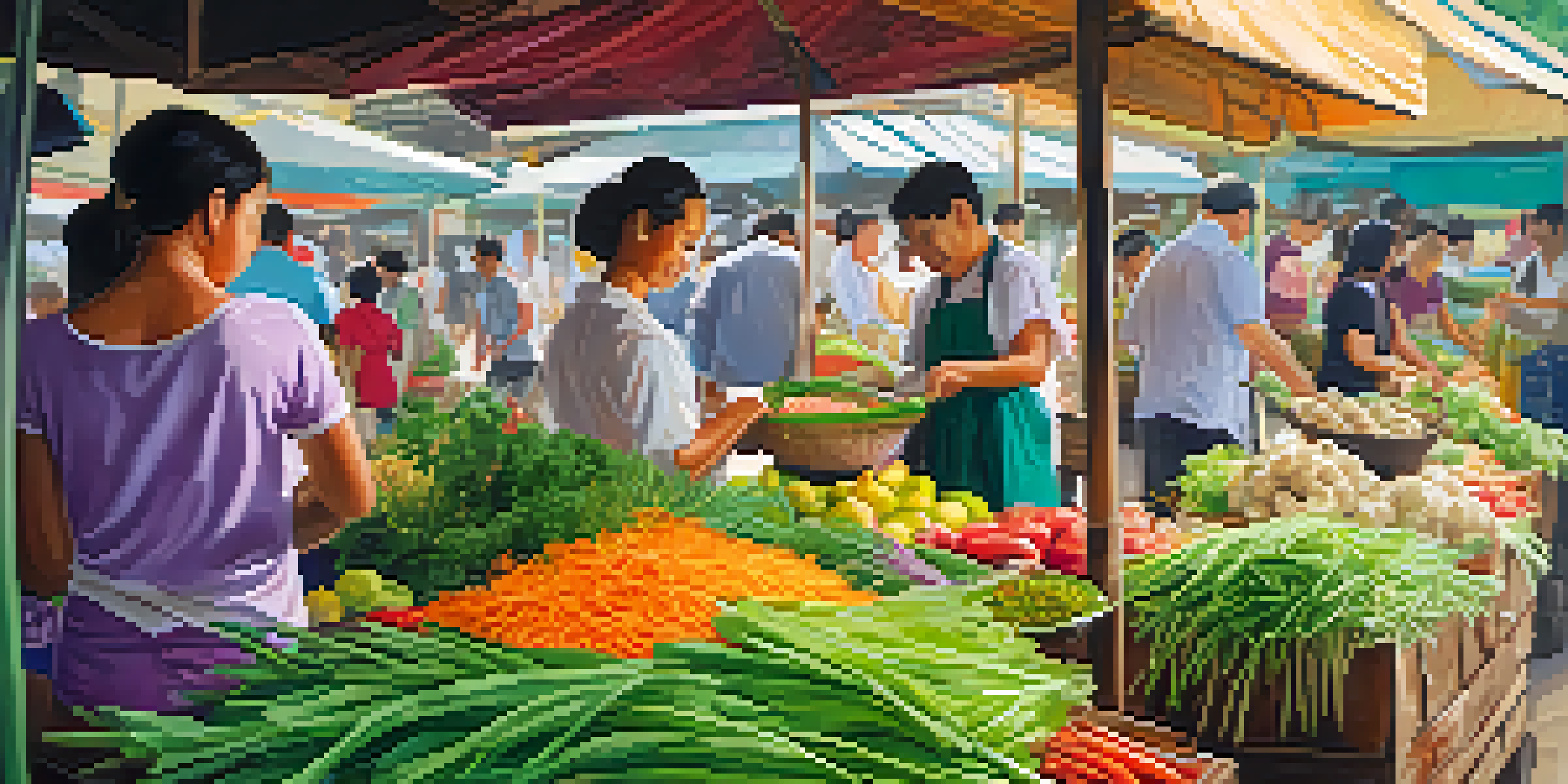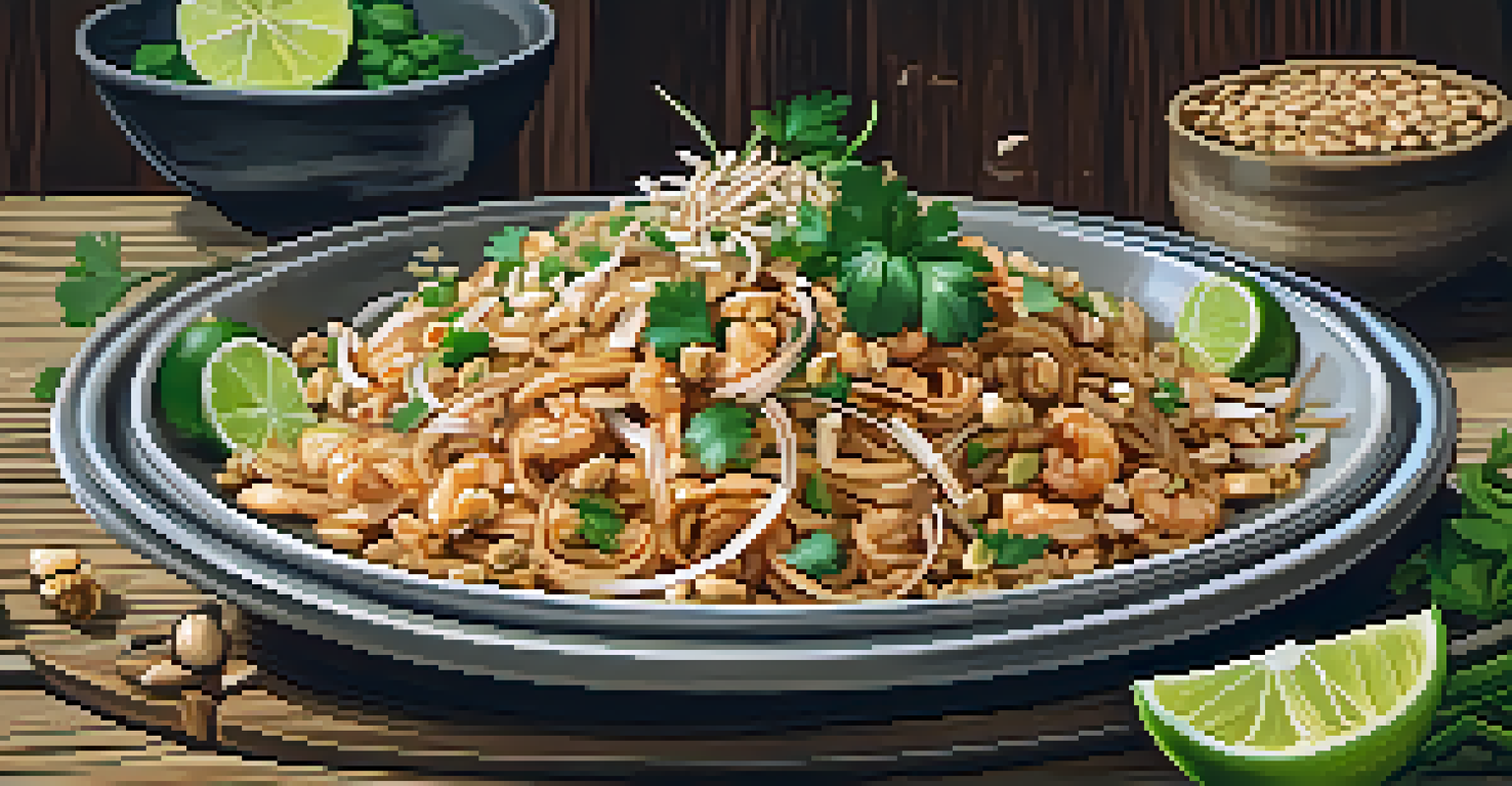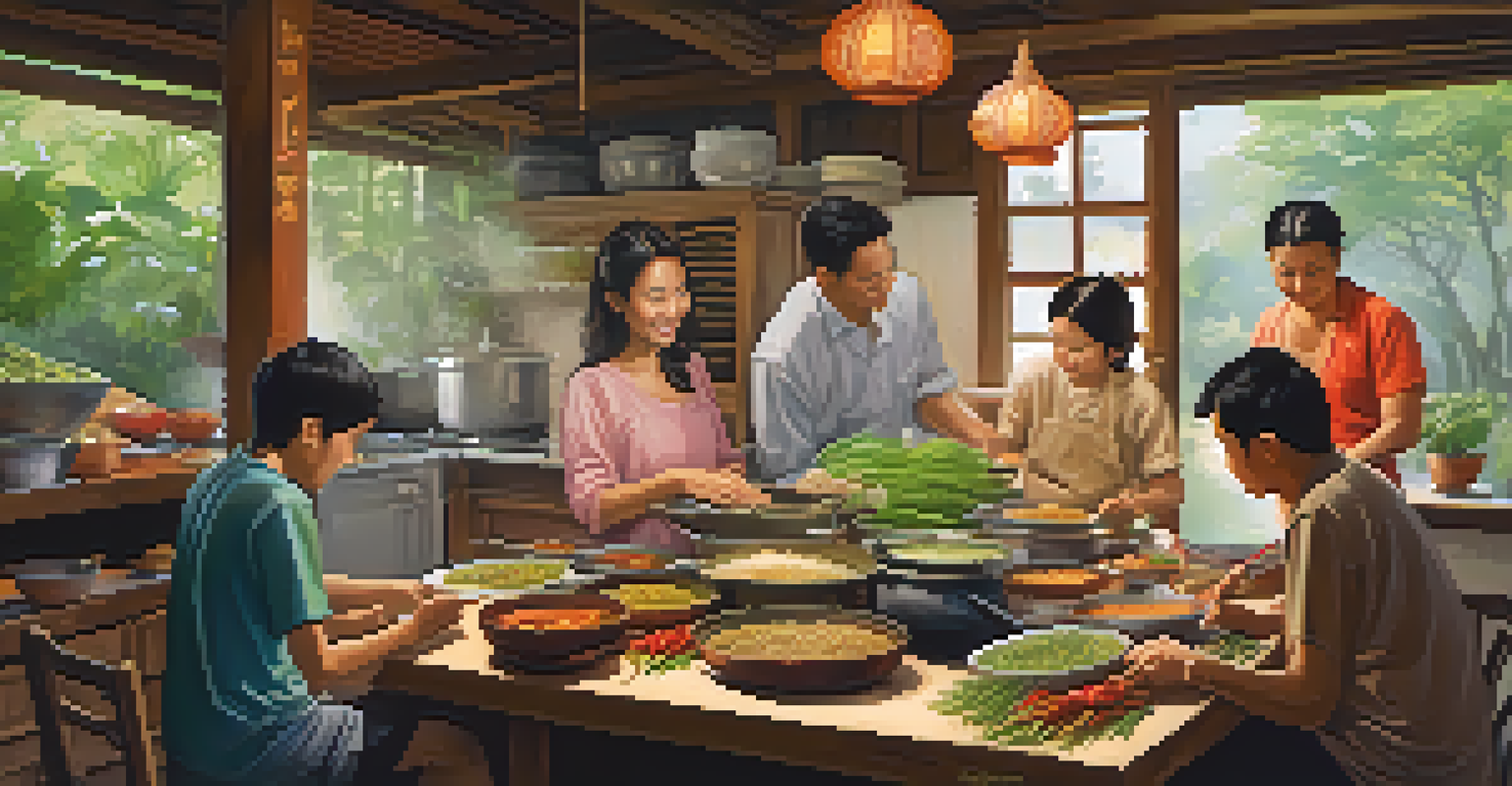The Art of Thai Cooking: Techniques from Traditional Homes

Understanding the Essence of Thai Cuisine
Thai cuisine is a vibrant blend of flavors, colors, and textures that reflects the country's rich culture. At its core, it emphasizes balance—sweet, sour, salty, and spicy. Each dish tells a story, often tied to regional ingredients and culinary traditions passed down through generations.
Food is not just what we eat; it is a way of connecting with others and celebrating life.
The warmth of Thai cooking comes from its communal nature, where meals are often shared among family and friends. This shared experience not only fosters connection but also enhances the flavors as everyone contributes their own touch to the meal.
By understanding the essence of Thai cuisine, you can appreciate the artistry involved in preparing each dish. It's not just about following recipes; it's about embracing a way of life that celebrates harmony in flavors and community.
Essential Ingredients in Thai Cooking
Thai cooking relies heavily on fresh and aromatic ingredients that give each dish its unique flavor. Common staples include lemongrass, galangal, kaffir lime leaves, and Thai basil. These elements contribute to the distinctive aroma and taste that Thai food is renowned for.

Incorporating ingredients like fish sauce and shrimp paste brings depth and umami, which are crucial for achieving that perfect balance. These condiments might seem intimidating at first, but they are essential for creating authentic flavors.
Balance is Key in Thai Cuisine
The essence of Thai cooking lies in expertly balancing sweet, sour, salty, and spicy flavors to create harmonious dishes.
Understanding how to source and utilize these ingredients is key to mastering Thai cooking. Local markets often offer fresh produce and spices, allowing you to experience the vibrant flavors that make Thai dishes so memorable.
Traditional Cooking Techniques to Master
Thai cooking techniques vary widely, but some are fundamental to achieving authentic results. Stir-frying, for instance, is a quick cooking method that helps retain the freshness and crunch of vegetables while infusing them with flavor. The technique is often seen in beloved dishes like Pad Thai.
Cooking is like love. It should be entered into with abandon or not at all.
Another essential method is steaming, which preserves the natural flavors and nutrients of ingredients. Dishes such as sticky rice and various desserts highlight this technique, showcasing how simplicity can lead to delightful results.
Lastly, mortar and pestle play a critical role in Thai kitchens, allowing cooks to crush herbs and spices to release their essential oils. This hands-on approach not only enhances flavors but also connects you to the culinary traditions that have been practiced for centuries.
The Importance of Balancing Flavors
One of the hallmarks of Thai cooking is its emphasis on balancing flavors. This means carefully combining sweet, sour, salty, and spicy elements to create a harmonious dish. The art lies in knowing when to adjust each component to achieve that perfect taste.
For example, a classic Thai salad, Som Tum, combines the sweetness of palm sugar, the tanginess of lime juice, and the heat from chilies. This interplay of flavors makes each bite a delightful surprise, keeping your palate engaged.
Fresh Ingredients Enhance Flavors
Using fresh herbs and aromatic ingredients is essential for achieving the distinctive flavors that Thai cuisine is known for.
Balancing flavors can be a trial-and-error process, but it's also an exciting journey. Don't be afraid to experiment and adjust seasoning to suit your preferences, as this personal touch will make your dishes truly yours.
Embracing the Use of Fresh Herbs
Fresh herbs are the soul of Thai cuisine, adding brightness and complexity to dishes. Herbs like cilantro, mint, and Thai basil are often used not just as garnishes but as integral components that elevate the overall flavor profile.
In traditional Thai homes, herbs are often grown in small backyard gardens, ensuring a supply of fresh ingredients. This practice not only promotes sustainability but also fosters a deeper connection to the food being prepared.
Learning to incorporate and recognize the role of fresh herbs can transform your cooking. Whether it’s adding them at the end of cooking for a burst of freshness or using them as a base for sauces, herbs are a key ingredient in the Thai culinary experience.
The Role of Community in Thai Cooking
In Thailand, cooking is often a communal activity. Families gather to prepare meals together, sharing techniques and stories that enrich both the cooking process and the resulting dishes. This sense of community is reflected in the vibrant flavors that define Thai cuisine.
Many traditional recipes are passed down through generations, with each family adding their unique twist. This not only preserves culinary heritage but also fosters a sense of belonging and identity within communities.
Community Enriches Cooking Experience
Cooking in Thailand is a communal activity that fosters connection and enhances the culinary experience through shared traditions and techniques.
As you embrace the art of Thai cooking, consider involving friends or family in the process. Cooking together can lead to laughter, learning, and a shared appreciation for the rich flavors and traditions of Thai cuisine.
Tips for Bringing Thai Flavors Home
If you're eager to bring the essence of Thai cooking into your home, start by stocking your pantry with essential ingredients. Items like coconut milk, curry pastes, and various sauces will serve as the foundation for many delicious dishes.
Don't shy away from experimenting with different recipes and techniques. Online resources, cookbooks, and local cooking classes can be great starting points for learning the nuances of Thai cuisine. The more you practice, the more you’ll refine your skills.

Lastly, remember that cooking should be fun! Embrace the spirit of Thai cuisine by enjoying the process, inviting friends over, and sharing your culinary creations. The joy of cooking often lies in the connections you make along the way.